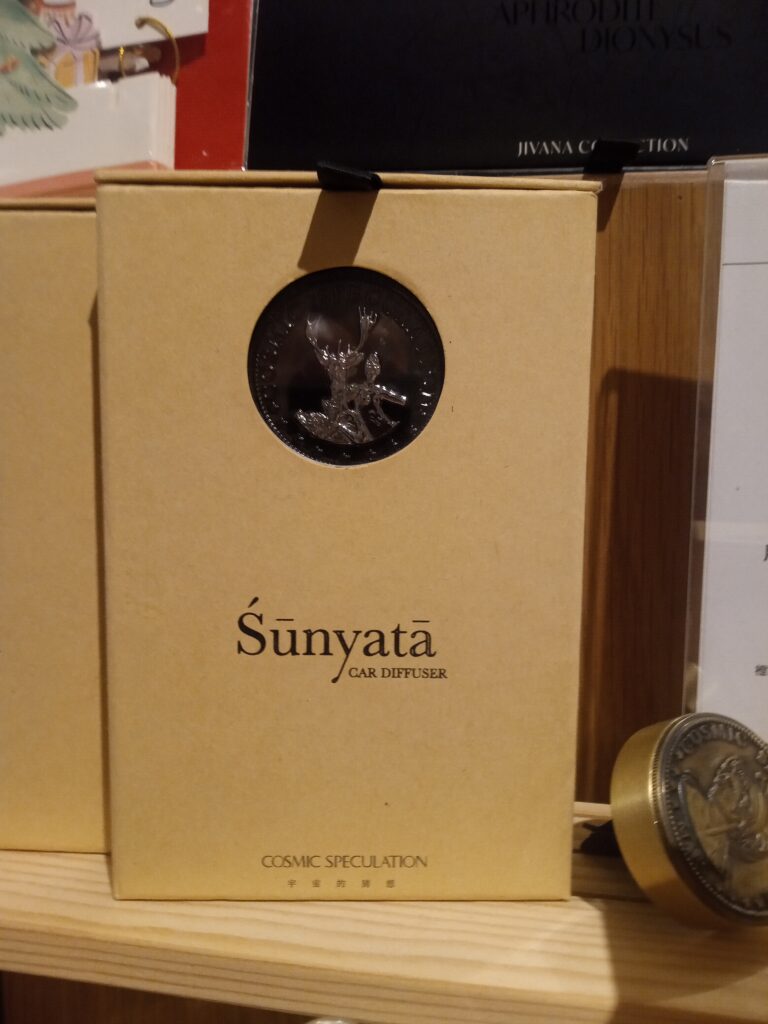During the last evening of my first time in Taiwan and stay at Nalandabodhi Taichung’s center Namkha Ösal, I went out for a walk and visited the famous Tsutaya Bookstore. There I came across this curious product with the name: śūnyatā.

Gampopa about the nature of samsara and nirvana
Two evenings earlier, when facilitating Gampopa’s Ornament of Precious Liberation Online Study Group, hosted by Nalandabodhi Netherlands, we came across this same word: śūnyatā. Gampopa writes in the Author’s Preface, as translated by Ken Holmes and edited by Thupten Jinpa:
“Generally, phenomena can be subsumed into the two classes of samsara and nirvana. The which is known as samsara is, by nature, emptiness [Sanskrit: śūnyatā], taking the form of illusions and characterized by suffering. That which is known as nirvana is also, by nature, emptiness [Sanskrit: śūnyatā], taking the form of the exhaustion, then disappearance, of the illusions and chaterized by liberation from all suffering.”
Gampopa uses this term to describe the nature of samsara and the nature of nirvana. The Sanskrit “śūnyatā” is translated into Tibetan as སྟོང་པ་ཉིད། (Tong-pa-nyi) and in English often translated as “emptiness.” The question I asked to our group was: What is the meaning of “emptiness” and does the English “emptiness” capture the meaning well? Furthermore, what is the significance of Gampopa teaching that both samsara and nirvana are, by nature, emptiness?
Śūnyatā: A car diffuser as the gateway to precious liberation?
Seeing this product “śūnyatā” at the bookstore and recollecting this conversation of two days before, there was a great sense of joy and wonder. Apparently, “śūnyatā” can also be a car diffuser. Isn’t that just beautiful? Smiling, I thought I really should take a picture of this. Looking at this curious use of the term śūnyatā for a cosmetic product from a playful dharmic perspective: perhaps it is through looking carefully at the nature of the appearance of this car diffuser that we can realize the deeper meaning of śūnyatā?

Gampopa continues his text by a series of questions to point out, in brief, how we don’t realize the nature of things and, as a consequence, are lost in illusions. This, in turn, leads to suffering. In a somewhat free adaption of his words, using the car diffuser as an example or metaphor, we could say that we are usually intoxicated or enchanted by smells, forgetting that it is devoid of any independent, substantial, and intrinsic reality. However, if we could see the ultimate nature of things, then we have found the gateway to liberation and enlightenment.
Śūnyatā, the interdependent nature of things, is not something separate from the things appearing to us but can be seen right through them. This shows the inseparability of samsara and nirvana. Their nature being the same. Thus, entering Tsutaya bookstore, with both a dharmic perspective and the spirit “Chill & Play” – the two words in front of the bookstore, and buying this car diffuser, might very well be a supportive condition to realize emptiness and attain liberation. Isn’t that wonderful? 🙂
Leave a Reply